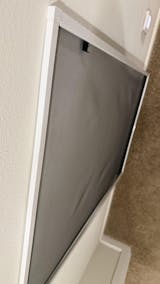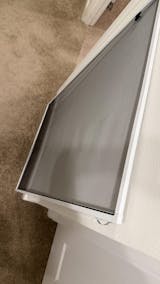For Spring 2020, many of us are being told to remain indoors, and it’s all too easy to feel cooped up. Staying inside for a long time can make you feel irritated with your housemates, birds chirping, and even your own reflection.
Not leaving your house can cause other kinds of irritation, too. For example, indoor air pollution is an irritant. It can cause serious health problems with prolonged exposure. Even the cleanest house will start to build up indoor air pollution when it stays sealed up. The first step to ridding your home of indoor air pollution is understanding what it is in the first place.
What Is Indoor Air Pollution?
Air pollution is the build-up of unpleasant or even harmful dust particles and gases. Outside, air pollution is more obvious – smog, smoke, and exhaust are all forms of outdoor air pollution. Indoor air pollution is more subtle.
Everything you bring into your home can wind up contributing to indoor air pollution in one way or another. According to the EPA, the following items make up the majority of indoor air pollutants:
- Asbestos, lead, radon, and carbon and nitrogen dioxide
- Biological pollutants
- Formaldehyde/pressed wood products
- Pesticides
- Indoor particulate matter (dust)
- Secondhand Smoke/Environmental Tobacco Smoke
- Stoves, heaters, fireplaces, and chimney smoke and soot
- Pet dander and saliva
- Hair, dry skin, and other substances from humans
- Viruses and bacteria
- Insect and rodent droppings, urine, and body parts
- Mold and mildew
Some of these materials, like smoke, dust, skin particles, and insect or rodent droppings, are generated in your house. Others make it inside your home on your clothes, shoes, groceries, or through an open door. Once they’re inside, they stay in your home and your air indefinitely. The only way to get rid of them is to vacuum your home thoroughly and then air everything out.
What’s in the Air Matters
Breathing air pollutions is problematic in many ways. Even otherwise-harmless substances can aggravate allergies and asthma. Other substances, like formaldehyde, mold, and asbestos can actively harm your lungs.
If you've been watching the news, there's never been a more important time to take care of your respiratory system. Cutting down on the amount of air pollution in your home is one way to fight for your health. Using window screens to help safely air out your home can keep you and your family healthy for the duration of the quarantine.
Outside vs. Inside Air
The simplest and most cost-effective way to cut down on indoor air pollution is to open your windows. The airflow from outside will carry the stagnant, polluted air out of your home. The fresh air that replaces it will dilute any remaining pollution.
In some locations, outdoor air is typically more polluted than indoor air. Car exhaust and manufacturing are significant sources of outdoor pollutants. Luckily for the environment, the current situation has cut outdoor air pollution significantly. Los Angeles has some of the best air quality in the world right now. For many people, there’s never been a healthier time to throw open their windows.
One thing to watch out for when opening your windows would be uninvited bug guests. Screening your windows is a quick and easy solution to keep bugs outside. Screens can also keep trash and leaves from blowing inside.
If plant allergens are a concern, there are a few things to keep in mind. First, mold and mildew are also allergens, and unlike pollen, they can actively harm your health. Cutting down on mold spores in your home is likely to cut allergy symptoms dramatically.
Second, you can open your windows at times when allergens are low to avoid inviting pollen inside. Many weather apps have allergen trackers so that you can check the likely pollen count. Plants tend to release pollen most heavily during the morning and in the late evening. Opening your windows in the early afternoon will help keep pollen out while letting clean, fresh air in.
How to Air Things Out
Properly airing out your house is the most efficient way to get rid of nasty pollutants. It doesn’t have to take long, either. You can effectively air out your home in as little as fifteen minutes.
First, open all the doors in your home. Sealing off rooms defeats the purpose of airing out your house. You want to exchange as much stale air for new air as possible.
Check to see which direction the wind is blowing, if you can. Having the wind help you out will help speed things up. Then open screened windows on the side of the house the wind is hitting, as well as the opposite side. You can open more windows if you like, but these are the most important. They allow the wind to blow right through your house.
Your home will have lower levels of carbon monoxide and dioxide in just fifteen minutes. The longer you leave the windows open, the more pollutants will be pushed out. Repeat this airing-out a few times a week to prevent air pollution from building up again.
Benefits of Quality Window Screens
Using quality screens for your windows will help you avoid indoor air pollution while keeping the outdoors outside. Air moves through window screens like they aren’t there. On the other hand, screens stop leaves, trash, bugs, and other pests in their tracks.
Screens also keep your windows safe. A sturdy screen can help prevent weather, kids, or tree branches from breaking your windows. It’s much simpler to replace a screen panel than an entire window, after all. Good screens also collect dirt and grime that would otherwise wind up dirtying your windowpanes.
Indoor air pollution is no joke. It can aggravate a variety of lung conditions, or even help to cause them. You don’t have to stew in it, though. Letting your home air out through your screened windows is a power-move that you can take to protect your respiratory health.








